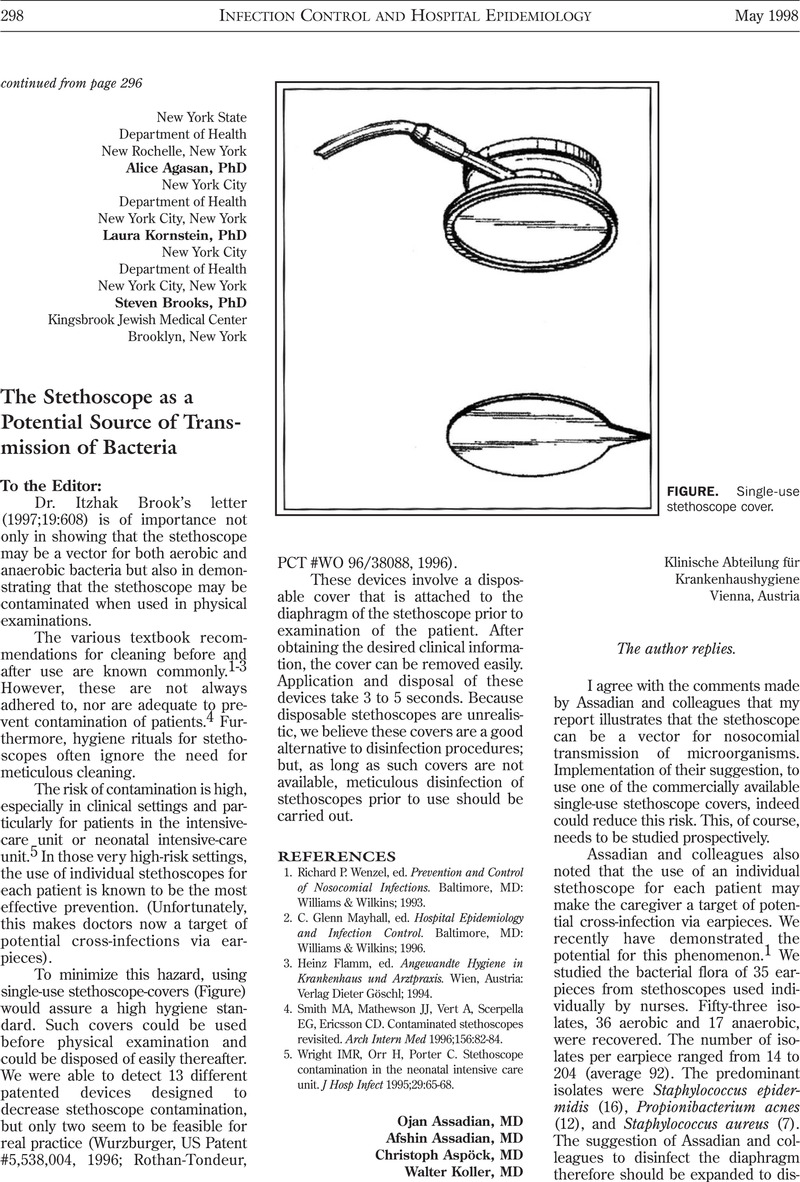No CrossRef data available.
Article contents
The Stethoscope as a Potential Source of Transmission of Bacteria (with reply)
Published online by Cambridge University Press: 02 January 2015
Abstract
An abstract is not available for this content so a preview has been provided. As you have access to this content, a full PDF is available via the ‘Save PDF’ action button.

- Type
- Letters to the Editor
- Information
- Copyright
- Copyright © The Society for Healthcare Epidemiology of America 1998
References
REFERENCES
1.
Richard, P. Wenzel, ed. Prevention and Control of Nosocomial Infections. Baltimore, MD: Williams & Wilkins; 1993.Google Scholar
2.
Mayhall, C. Glenn, ed. Hospital Epidemiology and Infection Control. Baltimore, MD: Williams & Wilkins; 1996.Google Scholar
3.
Flamm, Heinz, ed. Angewandte Hygiene in Krankenhaus und Arztpraxis. Wien, Austria: Verlag Dieter Göschl; 1994.Google Scholar
4.
Smith, MA, Mathewson, JJ, Vert, A, Scerpella, EG, Ericsson, CD. Contaminated stethoscopes revisited. Arch Intern Med
1996;156:82–84.CrossRefGoogle ScholarPubMed
5.
Wright, IMR, Orr, H, Porter, C. Stethoscope contamination in the neonatal intensive care unit. J Hosp Infect
1995;29:65–68.Google Scholar
1.
Brook, I. Bacterial flora of stethoscopes' earpieces and otitis externa. Ann Otol Rhinol Laryngol
1997;106:751–752.CrossRefGoogle ScholarPubMed


